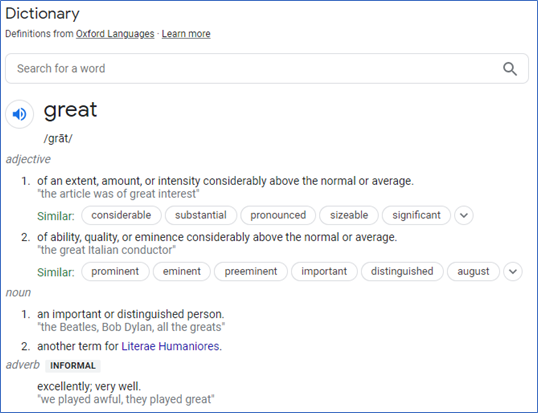To Wage War On Work & Wage
By Kevina “Liz” Mitchell, Employee Benefits Account Specialist
Like many of the other 10 million single mothers in America, I have one beautiful princess who my life revolves around. Yet, whether we be single parents, two parent homes, or even individuals, this past year has likely affected each of our metaphorical family orbits. Once inflation took flight last year and refused to land, I was faced with a hard decision: either leave my current job (which I love) or take on a second part-time gig. Neither choice is appealing, but I have chosen the second. A) Because again, I love my job and B) because although the job market is hawt, the jobs I do qualify for either do not pay what I need, or they just seem really sus.
I do wonder when the last time the State of Alaska updated their assistance eligibility requirement was. Though I have by all accounts a respectable white-collar job, I still struggle to pay my bills, often having to choose between buying food or paying said bills. There’s no extra. The things my daughter and I were able to enjoy before this inflationary period are now unattainable because they cost money that I simply don’t have. As she grows… so do her interests. She wants to take classes that there are no funds for. Even I would like to take a class or two to grow my interests but cannot. But, according to Alaska, I make too much money. So, help is not available to me.
My remaining option then becomes to work more hours, having even less time with my little girl who needs me, and exhausting myself more than I already am. I suppose I could don a nice dress and hunt for a rich man… but I’m anemic so I don’t have the energy for that, hahaha! I do, however, think this is an opportunity for some creativity. My mother has been pestering me to start painting again. Allegedly I have a growing fanbase on JBER that would like to purchase my art pieces. I’ve also decided that this is a wonderful time to monetize my stunningly straight teeth and infectious personality via the Food & Beverage Industry.
Either way, I know I’m going to be just fine. While this isn’t how I envisioned my life going I can’t say that it’s boring. At least I have this life and the wonderful daughter within it. I’m also pretty excited about the possibilities! Especially the part where I will have no excuses to not leave my house anymore…or maybe that part was just anxiety, I don’t know. But darn it all, it’s happening, and life goes on.
- Published in Blog
Understanding the Quiet Hiring Trend
This article is from RISQ Consulting’s Zywave client portal, a resource available to all RISQ Consulting clients. Please contact your Benefits Consultant or Account Executive for more information or for help setting up your own login.

HR professionals have likely already heard about “quiet quitting,” where employees put no more effort into their jobs than necessary, and “quiet firing,” where employers or managers slowly pull back employee duties instead of outright firing them. Now, there’s another phrase gaining traction in workplaces: “quiet hiring.”
While the term for it is new, quiet hiring isn’t necessarily a new concept. Given the ongoing talent shortage and a looming recession, more companies are exploring this trend to fill jobs and address priorities. This article explores the quiet hiring trend, its benefits and ways employers can leverage the talent strategy.
What Is Quiet Hiring?
Quiet hiring is when companies upskill existing employees and move them to new roles to fit business needs. It’s proven to be an efficient, cost-effective way for employers to snag in-demand talent without going through traditional external hiring channels. Quiet hiring addresses an organization’s immediate needs while not technically doing any new hiring.
An organization may already quietly identify and reward current workers who consistently exceed expectations and objectives. But forward-thinking organizations use quiet hiring to identify their own peak performers and promote them to avoid relying on external hires for open key positions. It is also used to acquire new skills and capabilities without adding new employees.
About 80% of workers in the United States say they have been “quiet hired,” according to a recent Monster survey. Furthermore, 63% of workers view quiet hiring as an opportunity to learn new professional skills. Career advancement opportunities, in turn, are helping employers retain employees. Even though it might seem like an organization may gain the most from quiet hiring, employees can benefit from this latest trend by securing a raise or promotion or developing new skills. In this way, quiet hiring gives power back to employees who want to move forward in their careers and be rewarded for exemplary workplace performance. The quiet hiring strategy is gaining traction since it benefits both employers and employees.
How Can Employers Quiet Hire?
Whether they know it or not, many organizations already engage in quiet hiring. However, some are being deliberate about it. Savvy companies like Google are already leveraging quiet hiring as a core component of their recruitment strategy. It’s expected that other companies will follow and look within to fill open or critical roles.
In many cases, organizations are not necessarily doing hiring freezes or layoffs, but they may be slowing down their hiring. Despite changes in hiring paces, organizations still have financial goals and business objectives to meet. Quiet hiring is rising to the top as a way for employers to work best with the talent that they currently have and make adjustments as needed for organizational success.
Consider the following ways that organizations are hiring quietly:
- Focusing on internal talent mobility to address business priorities
- Moving employees—temporarily or permanently—into different roles or responsibilities
- Upskilling employees to meet organizational needs
- Leveraging short-term contractors or gig workers to bring in additional talent
Although internal mobility is often seen as a positive for workers, employers should keep in mind that some employees may interpret quiet hiring as being told that their regular job—what they were initially hired for—isn’t particularly important at the moment. This transparency is even more critical if an employee’s move is permanent and the old responsibilities are not backfilled.
Supervisors and managers can help address these concerns by clearly articulating why the new project or department is crucial to organizational success. Regardless of the decision to quiet hire, it’s vital for employers to ensure employees feel valued and part of something bigger. If these extra steps aren’t taken, current employees may feel undervalued and start looking for other career opportunities outside the organization.
Summary
Quiet hiring allows employers and managers to hone in on employees who are already going above and beyond in their daily work and proving they have what it takes to excel in a given role. As with any trend or strategy, quiet hiring will impact every workplace and workforce differently. Many organizations already take part in this strategy. However, some employers may need to look closer at their current workforce to better meet organizational goals and objectives.
Reach out to RISQ Consulting for guidance on the latest employee attraction and retention trends.
- Published in Blog
NEWS BREIF: Senate Passes the Inflation Reduction Act
This article is from RISQ Consulting’s Zywave client portal, a resource available to all RISQ Consulting clients. Please contact your Benefits Consultant or Account Executive for more information or for help setting up your own login.
The U.S. Senate recently passed the Inflation Reduction Act, which includes provisions aimed at addressing climate change, reducing the high costs of prescription drugs and lowering the deficit by approximately $300 billion. The $750 billion spending bill passed through the budget reconciliation process, meaning all 50 Democrats and one tie-breaker vote from Vice President Kamala Harris were all that was needed.
How Will the Inflation Reduction Act Impact Health Care Policy?
The legislation includes provisions to lower prescription drug prices by allowing the federal health secretary to negotiate the prices of certain expensive drugs annually for Medicare. However, this will not impact every prescription drug and will not happen quickly. The negotiations will begin in 2026 for a maximum of 10 prescription drugs covered by Medicare, another 15 drugs in 2027 and 2028, and then 20 drugs in 2029. Additionally, pharmaceutical companies will be required to issue rebates if they raise drug prices beyond the rate of inflation.
The bill originally included a provision capping insulin at $35 per month for privately insured and Medicare patients. However, the Senate parliamentarian ruled the provision for privately insured patients out of order and removed it before the legislation was passed. The bill does cap out-of-pocket prescription drug costs at $2,000 for people on Medicare beginning in 2025.
Importantly, the bill helps millions of Americans avoid sharp increases in health care costs by extending enhanced Affordable Care Act subsidies for three years, one year later than originally proposed by the U.S. Congress.
What Else Does the Inflation Reduction Act Address?
The bill represents the largest climate change investment in U.S. history, with the goal of reducing U.S. carbon emissions by 40% by 2030. The bill contains tax incentives to reduce the cost of electricity by investing in renewable energy infrastructure and incentivizing Americans to switch to electric power for their homes and vehicles.
To boost revenue, the bill imposes a 15% minimum tax on the income of large corporations that earn at least $1 billion per year. This is expected to raise $300 billion in government revenue. The bill also levies a 1% excise tax on stock buybacks that will take effect in 2023. Some experts believe this will result in a rush on buybacks by some companies before the excise tax takes effect next year.
What This Means
The U.S. House plans to take up the bill at the end of the week. If the House passes the bill, which experts anticipate will happen, the legislation will be sent to President Joe Biden for signature. As this legislation is anticipated to impact large segments of the U.S. economy, employers will want to follow the process closely.
We will keep you apprised of any notable updates. Contact RISQ Consulting for more health care resources.
- Published in Blog
I’m Great, How Are You?
By Bailey Penrose, Employer Services Account Manager
We live in a tongue-in-cheek era. Public officials engaging in sly humor during press conferences, memes highlighting current events, comic strips poking at both politicians and policies, irreverent bumper stickers about social issues… the list goes on. It seems like a point is better made with a punch line. I don’t mind this as it makes me chuckle quite frequently. However, the one-two punch of the ambiguous definition of the word ‘Great’ I would be happy to leave behind.

I would love to a have a great day! A great event of much import makes me want to hyperventilate into a paper bag.
We’ve all had a rough couple of years, and to cap it off we’re now dealing with another ‘Great’. The ‘Great Recession’, as it’s become known, is a reality for many right now and may stick around as we see how the shifting employment landscape settles.
Adria Horn, executive vice president of workforce at Tilson, and an army veteran who has served five tours of duty overseas, has a compelling theory about why we’re seeing this employee mass migration. She explores her theory, and the potential outcomes of this most recent ‘Great’, in a thought-provoking article over at McKinsey & Company.
- Published in Blog






